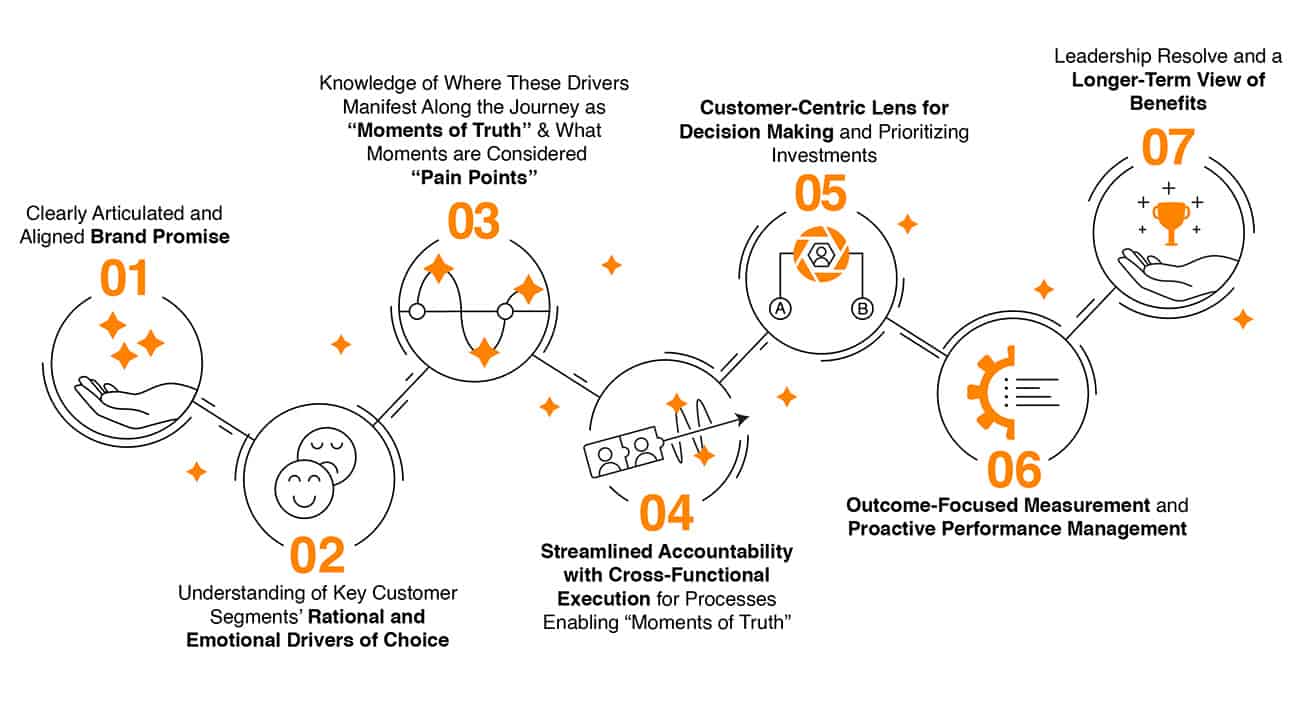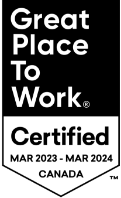
Article
Here’s What to Learn from Most Customer-Centric Organizations
Efram Lebovits, Claude Ricks, Jordan Shapiro — May 17, 2022
As the importance of customer experience increases, here’s what to learn from most customer-centric organizations.
We’re in a moment when customer expectations and behaviours are rapidly changing as a result of several driving forces. These include how COVID-19 accelerated the digital transformation, the more significant demographic shifts, and cultural changes impacting preferences. At the same time, the marketplace and the tech driving it are disrupting established infrastructure.
Considering this, a concentrated focus on building the most robust customer experience possible is the most effective investment in the company’s sustainable growth and profits.
However, designing experiences that deliver on customers’ critical wants and needs – and doing so at the right key moments is not easy. Historically, organizations have been reactive in their approach to building around the value out of customer journeys.
Today, the complete opposite is true.
The most effectively led organizations are the ones that recognize the importance of the customer experience: that it’s a competitive advantage and it’s the foundation for building loyalty, market share, and growth.
The goal should be to build an organization that clearly defines a promise to the market and consistently keeps it. And the most effective customer journeys are ones created alongside brand promise and designed to bring that promise to life with the necessary organizational infrastructure, including an integrated omnichannel experience and an operational model that can consistently deliver on the contract.
This is core to our approach and belief. At Level5 Strategy, we view brands as the Value of a Promise Consistently Kept™. Successful brands align their promise to customers’ key drivers to establish customer intimacy and a strong reputation. Recently, we have asked a group of leaders across various sectors, roles and geographies to identify and share their insights on their organization’s customer-centric maturity and assess their organization’s practices within each of the following seven dimensions.

The seven dimensions include:
1. Clearly Articulated and Aligned Brand Promise
2. Understanding of Key Customer Segments’ Rational and Emotional Drivers of Choice
3. Knowledge of Where These Drivers Manifest Along the Journey as “Moments of Truth” & What Moments are Considered “Pain Points”
4. Streamlined Accountability with Cross-Functional Execution for Processes Enabling “Moments of Truth”
5. Customer-Centric Lens for Decision Making and Prioritizing Investments
6. Outcome-Focused Measurement and Proactive Performance Management
7. Leadership Resolve and a Longer-Term View of Benefits
The first two dimensions relate to how mature organizations establish clearly articulated, data-informed promises to their customers. The other five describe how effective organizations set up their business systems to keep these promises consistently. The overarching learning through this exercise is that by designing customer journeys that align with essential drivers and their brand’s market-facing promise, organizations can deliver a transformational customer experience.
Our other findings include the following:
Mid-Scale Companies Lag on Customer-Centricity
It may seem counter-intuitive that there would be a regression in maturity as organizations scale, but the research, and our client experience, support this insight. Small, entrepreneurial organizations need to be singularly focused on their customers – they must be “all hands on deck” with shared ownership of customer success. Larger scale businesses, conversely, have the operational capacity and financial scale to support entire resource functions that focus on the customer while their core business performance is generally steadier.
On the other hand, Mid-scale organizations run into the issue of limited resources and competing priorities. They do not perform as well against their customer experience performance expectations as their smaller or larger peers tend to do.
This may result from deprioritizing the customer and blurring accountabilities while building scalable operational systems and concentrating on growth. Until enough scale is established to resource against the customer experience, the focus on customers may play second fiddle to topline drivers.
Making Promises and Consistently Keeping Them: Those Who Do Both, Do Better
Companies that are more mature in establishing a customer-centric brand promise are also more sophisticated in setting their operating model up to deliver that promise.
Despite a clear connection between “Promise” and “Consistently Kept”, knowing where and how to connect the two is difficult. Understanding Rational and Emotional Drivers, and applying them to critical Moments of Truth and the underlying processes that deliver them is the least mature dimension across the entire research dataset.
What Gets Measured Gets Done
Organizations with higher maturity in defining customer-focused KPIs, evaluating performance against them, and transparently sharing results (internally and externally) tend to outperform their expectations for customer-centric performance over time. And when customer-centric performance is made public and considered vital to overall business performance, then even more attention is given.
Our data suggests that organizations that formally measure and report against customer experience at the highest levels (e.g., using Net Promoter Score, Likelihood to Recommend, or other benchmark metrics) are 2.5 times as likely to overperform or significantly overperform against their expectations.
Where Is Your Organization in Its Customer Centricity?
Building a customer-centric organization is crucial for sustainable growth in a time of shifting consumer expectations and demands. If you want to understand your organization’s customer-centric maturity better, please click here to take the 10-minute assessment. After completion, Level5 Strategy will share your dashboard with you, along with comparisons of your results alongside those of other cross-sector leaders.
For more on Customer Centricity, please see:
Promises Made, Promises Kept: How to develop your Customer Centricity in 2021




